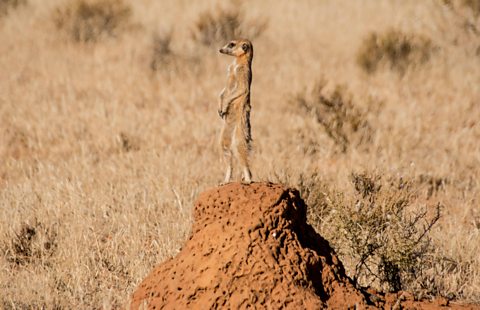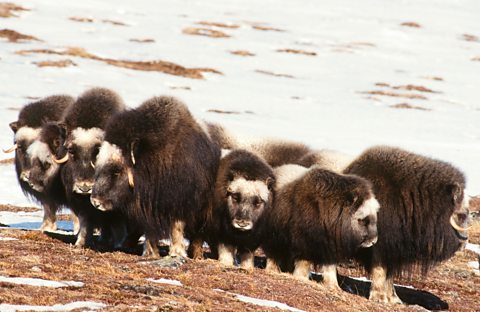Social mechanisms for defence

A meerkat stands sentry on a termite mound while its family forages

Musk oxen forming a defensive circle - facing outwards
'Safety in numbers' is a mechanisms employed by many groups of animals. Staying together in a large group brings a number of benefits:.
- some individuals can look out for predators while others eat – for example meerkat sentries
- a group will seem more intimidating to a predator, which may be put off from attacking
- when the group is attacked they can work together to defend themselves
- individuals have a better chance of surviving an attack
Defence is particularly strong when groups adopt a specialised formation during an attack. For example musk oxen will form a tight circle and face outwards ready to spot danger from any side and to defend themselves with their horns.
When baboons are on a march, the dominant males stay in the centre with the females with young. Lower ranking males and juveniles keep to the edge of the troop and raise the alarm if the group is threatened by a predator.